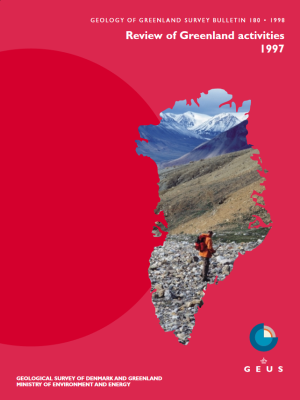Mantle xenoliths from Tertiary lavas and dykes on Ubekendt Ejland, West Greenland
DOI:
https://doi.org/10.34194/ggub.v180.5099Abstract
Mantle xenoliths were found in Tertiary alkaline (basanitic) lavas on Ubekendt Ejland in West Greenland in the mid 1970s by J.G. Larsen. Microprobe analyses of olivine, pyroxene and spinel in two mantle xenoliths, suggested that the xenoliths on Ubekendt Ejland are highly depleted and have high modal olivine contents, and low modal orthopyroxene and clinopyroxene (Larsen 1982). In this respect the mantle xenoliths from Ubekendt Ejland are very similar to the spinel harzburgites from Wiedemann Fjord, in the Tertiary volcanic province of East Greenland (Brooks & Rucklidge 1973; Bernstein et al. 1998). Larsen (1981) also reported dykes containing mantle nodules and a varied suite of cumulates and megacrysts, one of which has subsequently been dated to 34.1 ± 0.2 Ma (Storey et al. 1998) The basalt flow that carries the xenoliths is from what is defined as the Erqua Formation which occurs at the top of the lava succession in western Ubekendt Ejland (Fig. 1; Drever & Game 1948; Larsen 1977a, b). The basalts have not been dated, but are younger than 52.5 Ma, which is the date obtained for the underlying formation (Storey et al. 1998). During July 1997, we spent three weeks collecting xenoliths and prospecting for xenolith-bearing dykes in the Uummannaq district of central West Greenland. The field work resulted in an extensive collection of xenoliths from an alkaline basalt flow described by Larsen (1977a, b), as well as the discovery of a dyke carrying a large number of ultramafic xenoliths of various origins.
Downloads
Published
Issue
Section
License
This article is distributed under a CC-BY 4.0 licence, permitting free redistribution and reproduction for any purpose, even commercial, provided proper citation of the original work. Author(s) retain copyright over the article contents.


